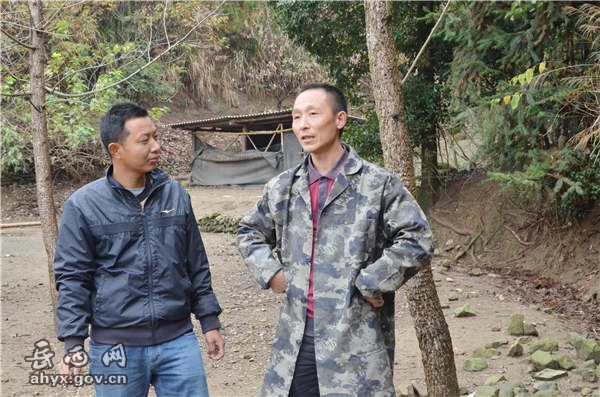Li Junjun: Why does my pepper harvest every year?
"I plant Chinese prickly ash, but very few people die of illness. There is a Chinese prickly ash tree in Shiwan Zanthoxylum bungeanum Garden. It is more than ten years old, 30 centimeters thick, and its crown covers an area of one centimeter. It can pick 300 jin of fresh pepper a year. I have planted more than 1000 prickly ash now. In 2015, I harvested 1500 kilograms of dried pepper, with an income of more than 70,000 yuan. This year, I can harvest 2000 kilograms of dried pepper, with an income of more than 100,000 yuan. "
Li Junjun is a big Chinese prickly ash grower in Lijiawan Village, Longfeng Township, Wudu District, Longnan City. he grows Chinese pepper with less disease. Li Junjun has his own set of techniques in the prevention and control of pepper diseases and insect pests. "the bactericidal mechanism of stone-sulfur mixture in winter is that it can produce ionization in aqueous solution, and its hydrophilic group contains strong positive charge, which absorbs all kinds of bacteria and viruses which are usually negatively charged, thus inhibiting the reproduction of bacteria and viruses, solidifying bacterial proteins, denaturing bacterial enzyme systems, and the film formed by polymers blocking the ion channels of these microorganisms. Make it immediately suffocate to death, so as to achieve the best germicidal effect. In order to increase the germicidal efficacy, some dichlorvos can be added. "
From January to March, the larvae in the Zanthoxylum bungeanum garden are about to break their eggs, so they can smear the tree trunk and spray medicine once. From June to September, the pests are in disorder and begin to breed. At this time, Hou smears the medicine once, which is very effective.
In recent years, the prevention and control of diseases and insect pests of Zanthoxylum bungeanum in Wudu District of Longnan City has become more difficult. Many prickly ash died of rhizobium, root rot and longicorn beetle pests as soon as they entered the full fruit stage. Li Junjun's exploration in terms of medicine and timing is worth popularizing.
Related
- A course of planting techniques and methods on how to grow carrots
- How to plant the latest tulips?
- Is it better to pick tea in the morning or in the afternoon? When is the best time for tea to be picked? what is the third or fifth tea?
- Launch Yuanxiao Happy combination Haocha + Tea Yuan healthy Taste
- Penghu Tourism "Fireworks 20 Parade with You"
- 2022 West Lake Happiness holds "Digital Revitalization Voucher" and draws iphone13 and laptop.
- Banqiao Fuzhou social houses are designed to change start-up combined with police elimination to create a safe and livable environment
- The convenient measure of "mechanical weeding" in Xinbei has been abused and the Agriculture Bureau has imposed heavy penalties on the illegal land consolidation.
- Changgeng University Joins Hands with Four Memory Factories to Rescue Memory Talent Shortage
- The list of Taiwan's top 100 MVP managers is listed by the Director-General of the Farmers' Association of Sanxia District.



